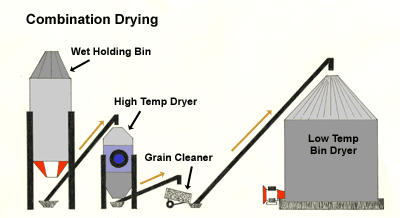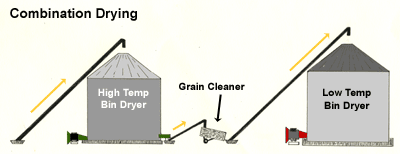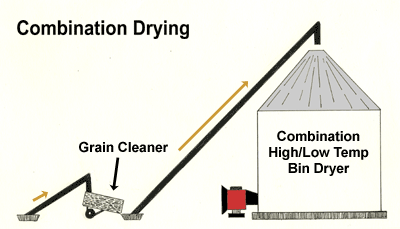Combination Drying
Combination drying utilizes the most efficient phases of both high temperature and low temperature drying resulting in the most energy efficient drying process. In this method grain is dried down to 22% moisture or less (drier in early fall) with high temperature drying and then transferred hot to a low temperature dryer to finish the drying process. The main disadvantage is the higher cost of equipment. All storage bins would require fans with adequate capacity for low temperature drying and a high capacity conveying system. The grain should be cleaned during the transfer to the low temperature dryer to improve air flow during the low temperature drying process.
This method uses more electricity than high temperature drying but less gas energy, usually 75% gas and 25% electricity versus 98% gas and 2% electricity for high temperature drying. This method can be used with any type of high temperature unit including a high temperature batch bin dryer. If grain is to be stored in the high temperature batch bin dryer, the grain would be dried to about 20%, the heater shut-off and drying finished with unheated air.




